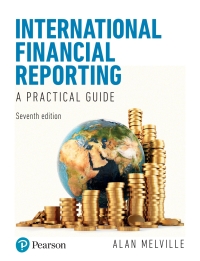IFRS16 Leases replaces IAS17 Leases for accounting periods beginning on or after 1 January 2019. The main
Question:
IFRS16 Leases replaces IAS17 Leases for accounting periods beginning on or after 1 January 2019. The main aim of the new standard is to ensure that a lessee's financial statements provide a faithful representation of the lessee's financial position†.
(a) Outline the way in which IFRS16 requires lessees to account for leases and explain why this provides a faithful representation.
(b) Explain the recognition exemptions available in IFRS16. Are lessees required to take advantage of these exemptions?
On 1 April 2019, Triste Ltd (which prepares accounts to 31 March) enters into a three year lease of a motor lorry. The company is required to make a lease payment of £50,000 on 1 April 2019 and three further lease payments of £42,500 each on 31 March 2020, 2021 and 2022. The company also incurs initial direct costs of £940. Legal title to the lorry will be transferred to Triste Ltd at the end of the lease term. The rate of interest implicit in the lease is 11% per annum.
(c) Explain (with calculations) how this lease should be accounted for in the financial statements of Triste Ltd for each of the three years to 31 March 2022.
(d) How should the lessor account for this lease? Assume that the lorry has a fair value at inception of £153,000 and that the lessor incurs initial direct costs of £870.
† In the case of operating leases, IAS17 required lessees simply to recognise the lease payments as an expense over the period of the lease. Such leases were not reflected in the lessee's statement of financial position at all (apart from the recognition of any accrued or prepaid lease payments).
Step by Step Answer:






